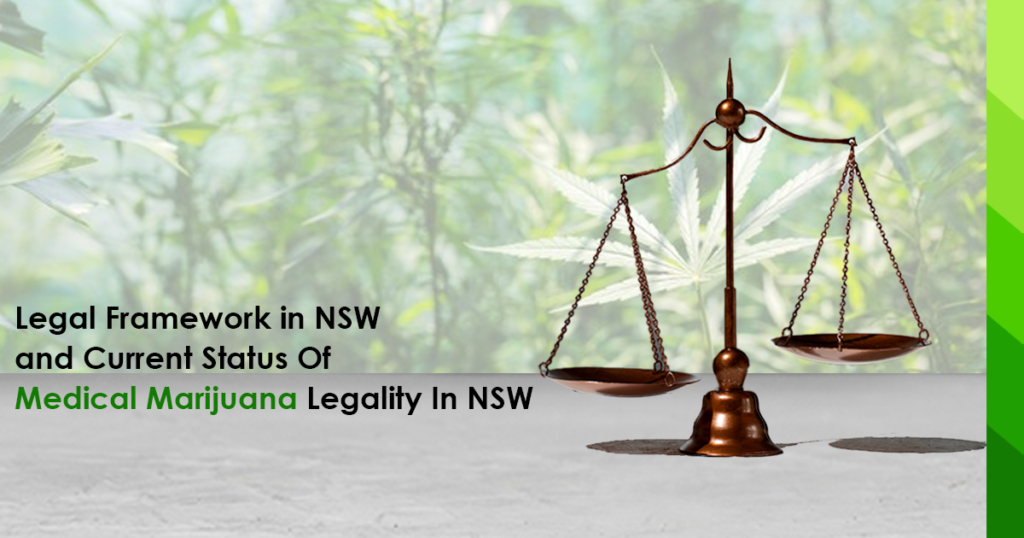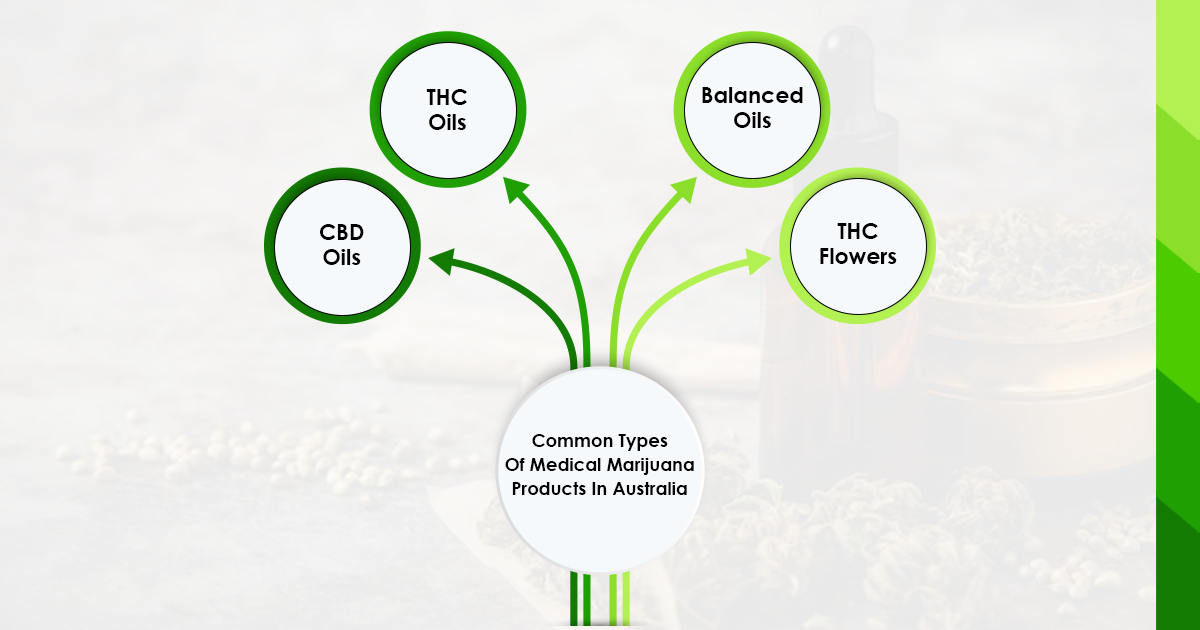Exploring the Cost Dynamics of Medical Marijuana in NSW
Medical marijuana has been legal in NSW since 2016 when the NSW government introduced the Medicinal Cannabis Compassionate Use Scheme. This scheme allows patients with terminal illnesses and their carers to possess and use cannabis for medical purposes without facing legal penalties. However, this scheme does not provide a legal source of cannabis, nor does it regulate the quality, safety, or dosage of the product.
Medical marijuana can help treat various conditions such as chronic pain, epilepsy, multiple sclerosis, cancer, and more, but patients who want to access legal medical marijuana products need to obtain approval from the TGA through medical cannabis doctors. This process can be complex, time-consuming, and costly, which can deter many patients from accessing medical marijuana.
In today’s blog, let’s dive into the cost dynamics of medical marijuana and understand the avenues to get access to safe and legal medical cannabis.
Legal Framework in NSW and Current status of medical marijuana legality in NSW

In NSW, patients who want to access medical marijuana products need to obtain approval from the TGA and the NSW Health Department. Medical marijuana is completely legal for personal use in NSW if prescribed by an authorised prescriber. Your prescriber will also get all the approvals you need for the use of medical cannabis. You can learn more about the laws and legal framework that governs use of medical cannabis in NSW here.
Types Of Medical Marijuana: Cost Variations Based On Product Types

Products made from medical marijuana tend to vary in composition, potency, and dosage depending on the strain, extraction technique, and formulation.
The main active ingredients in cannabis are cannabinoids, such as tetrahydrocannabinol (THC) and cannabidiol (CBD), which have different effects on the body and mind.
THC is the psychoactive component that causes the high, while CBD is the non-psychoactive component that has anti-inflammatory, anti-anxiety, and anti-epileptic properties. THC and CBD levels vary between medical marijuana products, depending on the intended use and patient preference.
Common Types Of Medical Marijuana Products In Australia
- CBD oils: These are oils that contain high concentrations of CBD and low or negligible amounts of THC.
- The average cost is around $10
- THC oils: These are oils that contain high concentrations of THC and low or negligible amounts of CBD.
- The average cost is between $13 and $16
- Balanced oils: These are oils that contain equal or similar amounts of THC and CBD. They are usually taken orally or sublingually and have moderate psychoactive effects.
- The average cost is between $13 and $16
- CBD flowers: These are dried cannabis flowers that contain high concentrations of CBD and low or negligible amounts of THC. They are usually smoked, vaporised, or infused in tea and have minimal or no psychoactive effects.
- The average cost is between $13 and $16
- THC flowers: These are dried cannabis flowers that contain high concentrations of THC and low or negligible amounts of CBD. They are usually smoked, vaporised, or infused in tea and have strong psychoactive effects.
- The average cost is between $13 and $16
- Balanced flowers: These are dried cannabis flowers that contain equal or similar amounts of THC and CBD. They are usually smoked, vaporised, or infused in tea and have moderate psychoactive effects.
- The average cost is between $13 and $16
Due to their wide availability and lower regulatory hurdles, CBD products are typically cheaper. THC products are usually more expensive since they are more restricted and have stricter quality standards. Balanced products are in the middle range, as they offer a balance of benefits and risks.
Health Insurance Coverage - Does Health Insurance Cover Medical Marijuana Costs In NSW?
One of the significant barriers to accessing medical marijuana in NSW is the lack of health insurance coverage. Currently, no health insurance provider in Australia covers the cost of medical marijuana products.
The lack of health insurance coverage means that patients have to pay the total cost of medical marijuana products out of their pocket. A Regular patient pays as much as 8% of their monthly income towards medical marijuana.
Doctor Consultation Fees And Costs - How Can Patients Legally Obtain Medical Marijuana In NSW?
There are many factors that can affect a doctor’s consultation fee, including the doctor’s experience, location, and availability, as well as the patient’s condition, needs, and preferences. The average consultation fee for medical marijuana doctors in Australia is $150.
Research undertaken by a reputed firm found that NSW had the highest average doctor consultation fee in Australia, at $150, followed by Victoria at $121 and Queensland at $118.
If you’d like to get access to legal medical cannabis in Sydney, then you can book a consultation with CannaAid Medical.
Comparisons With Other Regions NSW Vs. Other Australian States

The cost of medical marijuana in NSW is higher than the cost of medical cannabis in Victoria and Queensland. The average cost of medical marijuana in NSW was $14.84 per gram, followed by Victoria at $13.97 per gram and Queensland at $13.59 per gram.
Comparisons With Other Regions Australia Vs. North America

Canada has legalised the recreational and medical use of cannabis since 2018, which means that anyone over the age of 18 can buy, possess, and consume cannabis for any purpose.
The US, on the other hand, has a complex and diverse legal framework for cannabis, as it varies from state to state and from federal to state level. Currently, 15 states and the District of Columbia have legalised recreational and medical use of cannabis, while 36 states and four territories have legalised medical use of cannabis. Federally, cannabis is still illegal as a Schedule I substance and is subject to criminal penalties.
Medicinal cannabis products in Canada cost roughly $8 per gram, compared to $10.73 in the US. Australians, on average, pay more than their North American counterparts for medical cannabis.
Contribution Of Medical Marijuana To The Economy

Medical marijuana can have a positive impact on the economy, as it can generate revenue, create jobs, and reduce costs. According to a report by Deloitte, the legal cannabis industry in Australia could be worth $1.5 billion by 2024, which is equivalent to 0.1% of the GDP. The report also estimated that the legal cannabis industry could create 15,000 jobs by 2024, which is comparable to 0.1% of the workforce.
Conclusions - Price Trends And Future Outlook Of Medical Marijuana In Sydney
NSW’s medical marijuana prices are likely to decrease over time as the legal framework becomes more progressive, demand increases, supply increases, and health insurance coverage improves. So, we’d say that the future holds a lot of potential for the industry as well as for patients looking to seek alternative forms of treatment for their long-term ailments.
We hope this blog helps you understand the cost dynamics of medical marijuana in NSW as well as understand how it stacks up against prices in other regions of the world.
FAQs
Frequently asked questions
How is the cost of medical marijuana determined in NSW?
The cost of medical marijuana in New South Wales (NSW) is determined by various factors, including the type of product, its potency, and the specific medical condition being treated. Additionally, the pricing structure may be influenced by the regulations set by the government and the individual policies of licensed medical marijuana providers.
- Medical marijuana cost is influenced by product type, potency, and medical condition.
- Government regulations and provider policies impact pricing.
Are medical marijuana expenses covered by insurance in NSW?
As of now, medical marijuana expenses are generally not covered by insurance in NSW. While the landscape of insurance coverage for medical marijuana may evolve over time, it’s essential for patients to currently assume that these costs will be out-of-pocket.
- Insurance coverage for medical marijuana in NSW is limited.
- Patients should anticipate covering expenses independently.
Are there patient assistance programs available to alleviate medical marijuana costs?
Yes, there are patient assistance programs specifically designed to alleviate the costs associated with medical marijuana in certain regions, including New South Wales (NSW). These programs aim to provide financial support to individuals facing economic challenges, ensuring they can access the necessary medical treatment.
- Patient assistance programs exist to alleviate medical marijuana costs.
- These programs offer financial support for individuals with economic challenges.
Is it legal to drive with medical marijuana in NSW?
Yes, it is legal to drive with medical marijuana in New South Wales (NSW) under certain conditions. Patients who have been prescribed medical marijuana by a registered healthcare professional are permitted to drive, provided they adhere to specific guidelines. It’s crucial for individuals using medical marijuana to be aware of the potential effects on their ability to drive and to exercise caution.
- Driving with medical marijuana in NSW is legal for patients with a valid prescription.
- Patients must be mindful of the potential effects on driving abilities and exercise caution.
- It is essential to follow any guidelines or recommendations provided by healthcare professionals regarding driving while using medical marijuana.
What is the Marijuana law in NSW?
The marijuana law in New South Wales (NSW) governs the cultivation, possession, and use of marijuana for both recreational and medicinal purposes.
Recreational Use: Marijuana for recreational purposes is illegal, and its possession, cultivation, or use can lead to legal consequences.
Medicinal Use: Medical marijuana is legal for certain medical conditions with a prescription from a registered healthcare professional.
Cultivation: Cultivating marijuana without the proper licenses is prohibited. Only licensed individuals or entities can cultivate for medical purposes.
Prescription Requirement: Medical marijuana in NSW requires a prescription, and patients can obtain it from authorized dispensaries.
Authorized Suppliers: To comply with the law, medical marijuana must be obtained from licensed and authorized suppliers, ensuring product safety and quality. Stay updated on any changes in legislation.
What is the main role of a GP?
The primary role of a General Practitioner (GP) is to provide comprehensive and primary healthcare services. GPs serve as the initial point of contact for patients, offering diagnosis and treatment for a wide range of general health issues. Their responsibilities include managing chronic conditions, preventive care, minor procedures, and coordinating referrals to specialists when necessary.
Key Information:
- GPs offer primary healthcare, addressing general illnesses and injuries.
- They focus on preventive care, conducting routine check-ups and vaccinations.
- GPs are trained to perform minor medical procedures in their offices.
The cost of medical marijuana in New South Wales (NSW) is influenced by various factors:
Type and Potency: Different types of medical marijuana products, such as oils, tinctures, or capsules, may have varying costs. Potency levels also play a role, with higher potency products often being priced higher.
Medical Condition: The specific medical condition being treated can impact the cost. Some conditions may require higher doses or more specialized forms of medical marijuana, affecting overall expenses.
Regulations: Government regulations and policies regarding the cultivation, production, and distribution of medical marijuana can influence pricing. Compliance with stringent regulations may contribute to increased costs.
Supply and Demand: Market dynamics, including the balance between supply and demand, can affect pricing. Limited availability or increased demand may lead to higher costs for medical marijuana products.
Provider Policies: Individual policies of licensed medical marijuana providers, including pricing structures and discounts, contribute to the overall cost. Different providers may offer varying price points for similar products.
Yes, there are government assistance programs and subsidies available in New South Wales (NSW) to support individuals with the costs associated with medical marijuana. These programs aim to provide financial aid to patients who may have limited means, ensuring access to necessary medical treatments. Patients can inquire with both healthcare providers and government agencies to obtain information about available assistance, eligibility criteria, and the application process. These programs play a crucial role in making medical marijuana more accessible and affordable for those in need.
In New South Wales (NSW), patients can legally obtain medical marijuana through the following steps:
Medical Assessment: Patients must undergo a medical assessment by a registered healthcare professional who can prescribe medical marijuana if deemed medically necessary.
Prescription: Upon assessment, the healthcare professional issues a prescription for medical marijuana, specifying the type, dosage, and duration of the treatment.
Authorized Suppliers: Patients can then obtain medical marijuana from authorized suppliers and dispensaries. These suppliers comply with legal regulations to ensure the safety and quality of the products.
Compliance with Regulations: It is crucial for patients to adhere to all legal requirements, including obtaining marijuana only through authorized channels and following the prescribed dosage and usage guidelines.
By following these steps and staying within the legal framework, patients in NSW can access medical marijuana for approved medical conditions. It’s essential to keep updated with any changes in regulations and consult with healthcare professionals for the latest information.
Are there generic alternatives available for medical marijuana in NSW?
Medical marijuana in New South Wales (NSW) does not have generic alternatives in the same way traditional pharmaceuticals might. The production and distribution of medical marijuana are highly regulated, and specific strains and products are often prescribed based on individual patient needs and medical conditions.
Medical marijuana is derived from various cannabis strains, each with unique cannabinoid profiles that can affect patients differently. While there may be variations in product offerings from different licensed providers, these differences are often based on factors such as potency, formulation, and delivery methods rather than generic alternatives in the traditional pharmaceutical sense.
Patients seeking medical marijuana in NSW must obtain it from licensed and authorized suppliers, and the specific product prescribed is based on the patient’s medical condition and the healthcare provider’s recommendation. It’s important to note that regulations and product availability may evolve, so it’s advisable to consult with healthcare professionals or regulatory authorities for the latest information.
Step into a world of relief with CannaAid’s dedicated approach to natural pain management.
We’re committed to alleviating suffering through plant-based medicine and providing a haven for those ready to break free from the restrictions of traditional medicine.








